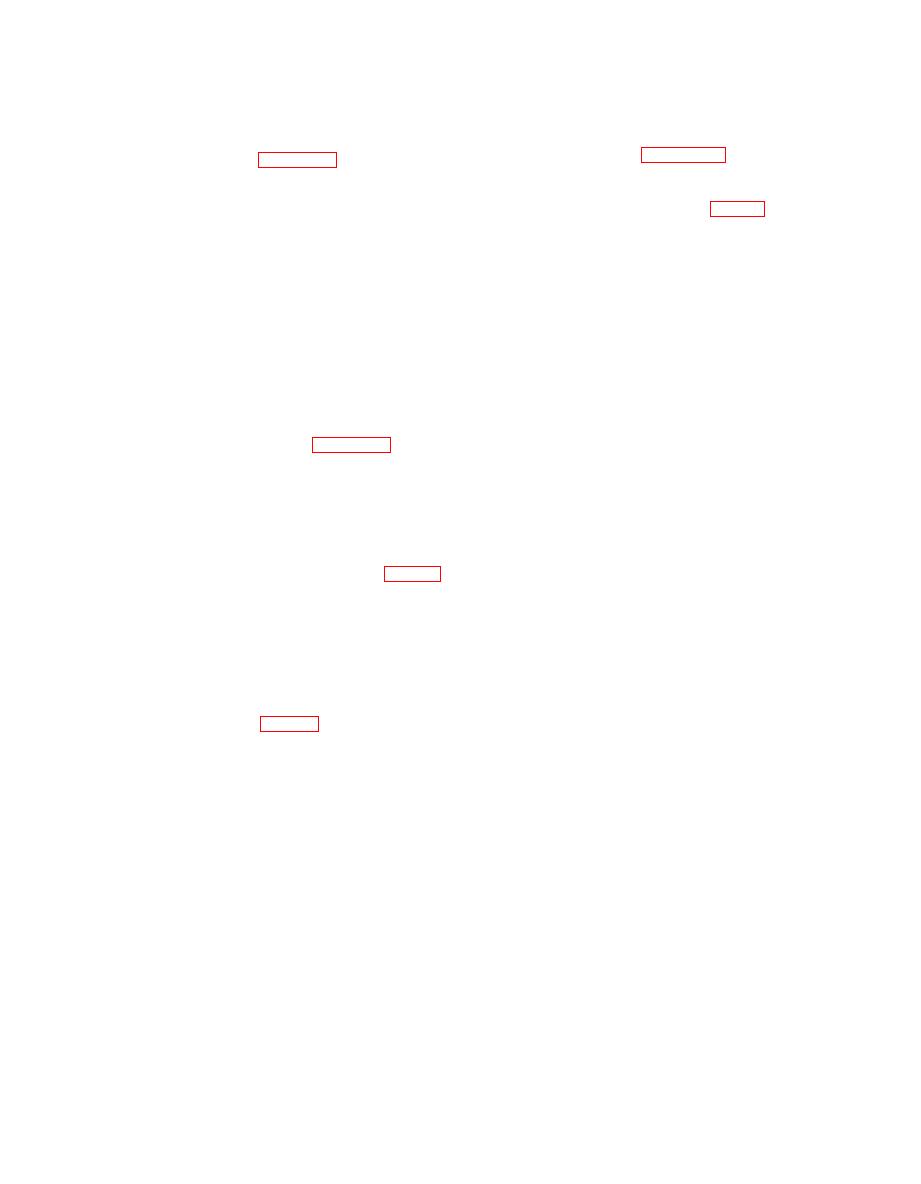 |
|||
|
|
|||
|
Page Title:
Crankshaft, Flywheel, and Damper |
|
||
| ||||||||||
|
|
 1-15. Cylinders and Valves
1-12. Crankshaft, Flywheel, and Damper
Note. The key letters shown below in
Note. The key letters shown below in
parentheses refer to figure 1-8 except where
parentheses refer to figure 1-8.
otherwise indicated.
a. Crankshaft assembly (QQ) is a nitrided steel
forging with seven main bearing journals and six
individually replaceable unit that consists of a
crankpins. Each crankpin accommodates two
barrel, cooling fin muff, and a cylinder head.
opposing connecting rod assemblies (UU ).
The cooling fin muff is cast directly on the steel
Flanges are provided on the crankshaft for
barrel. The finned, cast aluminum cylinder head
mounting the flywheel (N ) on the rear end and a
is threaded and shrunk on the barrel. Cooling
torsional vibration damper (TT ) on the front
fins, exhaust and intake ports, and a single
end.
rocker box are cast integrally with the cylinder
b. All crankpin and main bearing journals are
head. Valve guides and seats are shrunk into
hollow to reduce weight. Holes are drilled
place in the head, The cylinder barrel is
diagonally through each main bearing journal
"choked" at the head end to provide a straight
and extend through the crank cheek and crank-
bore under running conditions. A mounting
pin to provide a direct passage for oil under
flange is machined on the cylinder barrel near
pressure to the connecting rod and crankshaft
the base to provide an attachment of the cylinder
main bearings as shown in figure 1-9.
to the crankcase. The cylinder assembly is
c. The crankshaft and flywheel are statically
secured to the crankcase with studs and nuts. An
and dynamically balanced.
outer extension of the cylinder head encloses a
d. The torsional vibration damper (TT) is a
recess or rocker box, which houses the valves,
precision viscous type and is replaceable only as
valve springs, and related parts. Rocker arm
an assembly.
assemblies (A and B ) are held in place by rocker
shafts in the cylinder head valve rocker support
The connecting rod assemblies (UU, fig. 1-8)
cover.
are tapered, I-beam section steel forgings. A
b. A camshaft bearing surface is provided in
bronze-lined, steel-backed, split, bushing type
each cylinder. The camshaft bearing is bored
bearing is pressed into the piston pin end of the
with the cylinder head valve rocker support
rod. The replaceable precision connecting rod
cover in place. Therefore the covers are not
bearings are the steel-backed, split type having
interchangeable and each must remain as a part
copper-lead alloy bearing surfaces.
of a specific cylinder assembly. Identifying
numbers are used on cylinder and covers to
The pistons (VV, fig. 1-8) are aluminum
prevent mismatching. Counterbores in the
forgings, cam ground and tapered to provide an
rocker box. and rocker support covers ac-
accurate fit in the cylinders at operating tern.
commodate the intercylinder rubber hoses and
peratures. The piston dome is machined to the
the steel flanges which enclose the camshaft
shape of a conical section (toridal shape) so that
between the cylinders.
it tapers into the open type combustion chamber.
c. The stem of the intake valve (YY) and
Each piston is fitted with four rings. The upper
exhaust valve (XX ), for each cylinder, extends
three rings are compression rings and the bottom
into the rocker box. Three nested springs,
ring is an oil control ring. The heavy walled,
compressed between two retainers and secured to
tubular, steel piston pins are full-floating in the
the valve stem by two cone-shaped locks, hold
p i s t o n and the connecting rod. Domed
each valve to its seat. Each exhaust valve has a
aluminum plugs are inserted into each end of the
positive valve rotator which also serves as the
piston pin to center it in the piston and prevent
lower spring retainer. Valve clearance adjusting
scoring of the cylinder wall.
screws with flat swivel pusher pads are mounted
on one end of the valve rocker arms (A and B).
1-6
|
|
Privacy Statement - Press Release - Copyright Information. - Contact Us |